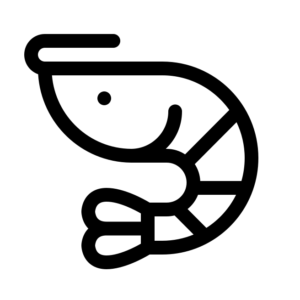The 4 Guiding Principles
Why the need for Guiding Principles?
We can understand from the guiding principle as the pillar of support that rest above the building blocks of basic fundamentals. The basic fundamentals such as the water parameters, filtration, plants, etc are the building blocks that allows the shrimp to be able to survive, breed, select and split.
In this post we talk about the guiding principle to share the importance of not rushing for results as any of the blocks can come crushing down the entire support structure which will put you further away from getting the results.

Alive, Breed, Select, Split

Alive:
This is the first step and the most important of all. Without mastering this step there is actually not much of a progress and while most shrimp breeders are able to keep their shrimps alive but when task with a very high grade shrimp that has been inbred for excellence/pedigree, they also stumble. Reason is simple, in-bred for pedigree show grade shrimps are often so in-bred where the genetic similarities are very close.
Keep the shrimp alive is actually the result of good water parameters (soft and hard values). A breeder keeps the water in tip top condition and the water will keep the shrimps alive.
Breed:
When we are able to keep the shrimp alive, then we will be able to start discussing about breeding. While breeding is fairly straight forward once you are able to get good water parameters, this part of it requires food/biofilm to be present to encourage breeding. Breeding shrimps is very fun and to see the next generation is very rewarding.
When in general you are getting the hang of breeding shrimps and they are growing and breeding again and again, we can move on to the next step which is select.
Select:
Selective breeding process is slightly different than just breeding the shrimps. Here there are a lot more technical details and book keeping to ensure the selection process are well documented.
To be able to discern between male and female is the fundamental for this step to begin because it involves removing males from the colony, using good males for breeding with females. In addition, multiple tanks are required for this step and a really good line can take more than 3 tanks to ensure genetic difference. Here, it is also important to know selection process while is the Be all End All does not mean it will guarantee there are results you expect. It may not work out and often adjustments are made and this can only be seen and know much further down the line when the shrimplets are big and when the colors/patterns are fix.
Split:
This is where you have improved the shrimp and colony to a large enough size to split into 2 tanks where you can then continue to selective breed them by crossing cousins. This helps dilute the genetic similarities comparing to inbreeding (Father x Daughter or Father x Grand Daughter). While cousins are still classified as inbreeding but they’re classified as distance so it will still help with the genetic stability.
Summary:
While the individual elements of the guiding principle in itself is a whole chapter by itself, the above shares the high level of what the guiding principles to get to results.

Taken Together
While we chase for results, we must also keep in mind that to allow ourselves to have time in the process to also enjoy it. Do not be frustrated or disappointed if you don’t get there the first time, so long as one is open minded and willing to keep trying and improve, eventually you will get there.
Not all projects will succeed and this is a given, so there is no need to feel bad about it. I have fail project time and time again just to try to get something out but after 1 year, nothing happens.
Hence, i have tried to categorize the journey i went through and share this with you so as to get more clarity on the topic of shrimp keeping.
Thanks for reading and below you can watch the video too!





